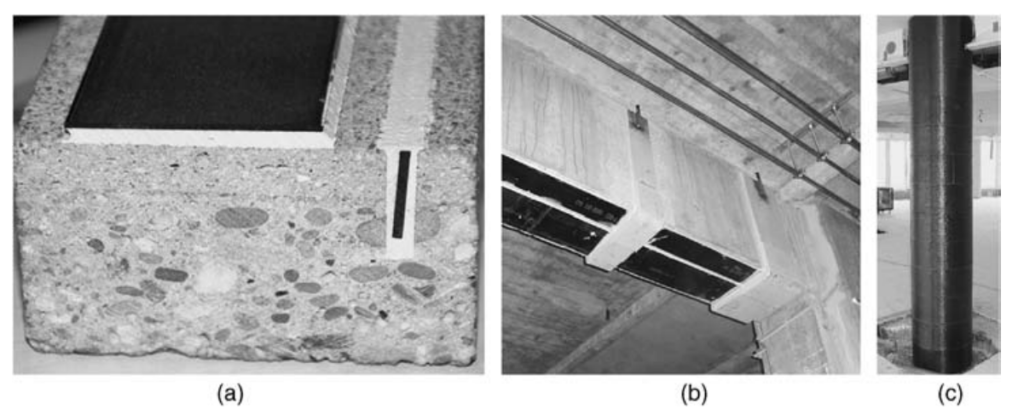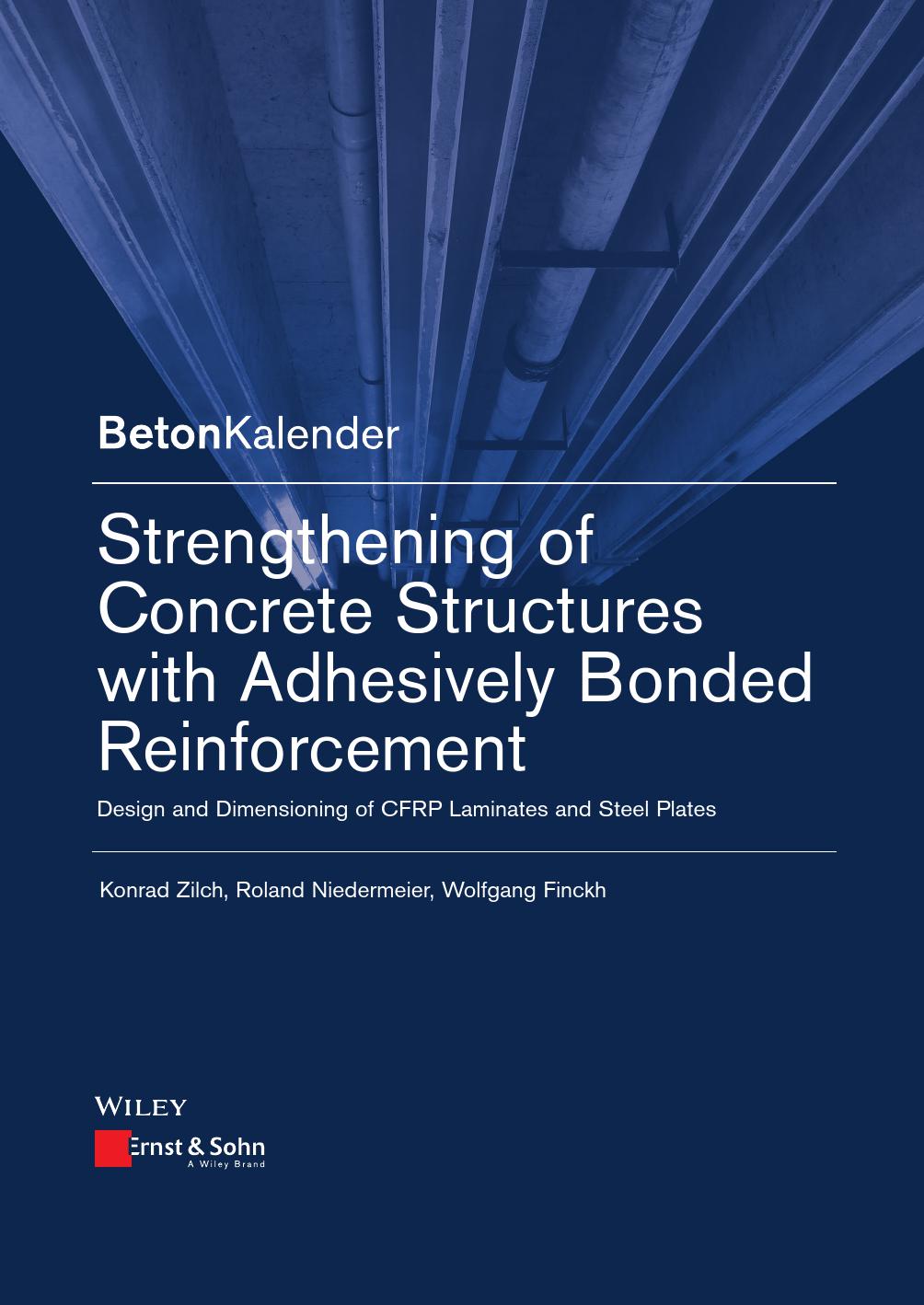Editorial
The Concrete Yearbook is a very important source of information for engineers involved in the planning, design, analysis, and construction of concrete structures. It is publishe on a yearly basis and offers chapters devoted to various, highly topical subjects. Every chapter provides extensive, up-to-date information written by renowned experts in the areas concerned. The subjects change every year and may return in later years for an updated treatment. This publication strategy guarantees that not only is the latest knowledge presented, but that the choice of topics itself meets readers’ demands for up-to-date news.
For decades, the themes chosen have been treated in such a way that, on the one hand, the reader gets background information and, on the other, becomes familiar with the practical experience, methods and rules needed to put this knowledge into practice. For practising engineers, this is an optimum combination. In order to find adequate solutions for the wide scope of everyday or special problems, engineering practice requires knowledge of the rules and recommendations as well as an understanding of the theories or assumptions behind them.
During the history of the Concrete Yearbook, an interesting development has taken place. In the early editions, themes of interest were chosen on an ad hoc basis.
Meanwhile, however, the building industry has gone through a remarkable evolution.
Whereas in the past attention focused predominantly on matters concerning structural safety and serviceability, nowadays there is an increasing awareness of our responsibility with regard to society in a broader sense.
This is reflected, for example, in the wish to avoid problems related to the limited durability of structures.
Expensive repairs to structures have been, and unfortunately still are, necessary because in the past our awareness of the deterioration processes affecting concrete and reinforcing steel was inadequate. Therefore, structural design should now focus on building structures with sufficient reliability and serviceability for a specified period of time, without substantial maintenance costs.
Moreover, we are confronted by a legacy of older structures that must be assessed with regard to their suitability to carry safely the increased loads often applied to them today.
In this respect, several aspects of structural engineering have to be considered in an interrelated way, such as risk, functionality, serviceability, deterioration processes, strengthening techniques, monitoring, dismantlement, adaptability and recycling of structures and structural materials plus the introduction of modern highperformance materials.
The significance of sustainability has also been recognized. This must be added to the awareness that design should focus not just on individual structures and their service lives, but on their function in a wider context as well, i.e. harmony with their environment, acceptance by society, responsible use of resources, low energy consumption and economy.
Construction processes must also become cleaner, cause less environmental impact and pollution.
The editors of the Concrete Yearbook have clearly recognized these and other trends and now offer a selection of coherent subjects that reside under the common “umbrella” of a broader societal development of great relevance.
In order to be able to cope with the corresponding challenges, the reader can find information on progress in technology, theoretical methods, new research findings, new ideas on design and construction, developments in production and assessment and conservation strategies.
The current selection of topics and the way they are treated makes the Concrete Yearbook a splendid opportunity for engineers to find out about and stay abreast of developments in engineering knowledge, practical experience and concepts in the field of the design of concrete structures on an international level.
Prof. Dr. Ir. Dr.-Ing. h. c. Joost Walraven, TU Delft Honorary president of the international concrete federation fib
1 Introduction
1.1 The reason behind this book
The main reason is the revised approach to the design of adhesively bonded strengthening measures for concrete members given in the guideline [1] (q.v. [2]) published by the Deutscher Ausschuss für Stahlbeton DAfStb (German Committee for Structural Concrete).
This book explains the design rules of the DAfStb guideline, together with their background, and uses examples to illustrate their use.
The scope of the explanations and background information provided here is mainly based on works that have already
been published. However, some rules that so far have been dealt with in detail in committee meetings only are elaborated here for the first time.
1.2 Strengthening with adhesively bonded reinforcement
The strengthening of concrete members means using constructional measures to restore or improve their loadcarrying capacity, serviceability, durability or fatigue strength.
The effects of strengthening measures can generally be described in quantitative terms and therefore analysed numerically.
Besides numerous other methods (see [3, 4], for example), the subsequent strengthening of existing concrete members can be achieved by using adhesives to bond additional reinforcing elements onto or into those members.
This topic of reinforcement bonded with adhesive has been the subject of many contributions to various editions of the Beton-Kalenderin the past (see [5, 6]). However, design approaches for adhesively bonded reinforcement have continued to evolve (see [7, 8]) and the new DAfStb guideline [1, 2] on this subject revises those design methods and adapts them to our current state of knowledge.
In principle, the DAfStb guideline together with a corresponding system approval allows the following concrete member strengthening measures to be carried out:
- Flexural strengthening with externally bonded (surface-mounted) CFRP strips, CF sheets and steel plates
- Flexural strengthening with CFRP strips bonded in slots (near-surface-mounted reinforcement)
- Shear strengthening with externally bonded CF sheets and steel plates
- Column strengthening with CF sheets as confining reinforcement.Figure 1.1 provides an overview of these methods.
The term ‘adhesively bonded’ is used in this book as universal expression comprising both methods ‘externally bonded’ and ‘near-surface-mounted’.
1 Introduction

with externally bonded CFRP strips together with shear strengthening in the form of externally
bonded steel plates (photo: Laumer Bautechnik GmbH); (c) column strengthening with CF sheets
as confining reinforcement (photo: Laumer Bautechnik GmbH)
Contents
Editorial
1 Introduction
- 1.1 The reason behind this book
- 1.2 Strengthening with adhesively bonded reinforcement
2 DAfStb guideline
- 2.1 The reasons for drawing up a guideline
- 2.2 Preparatory work
- 2.3 Work on the guideline
- 2.4 The structure and content of the guideline
- 2.4.1 General
- 2.4.2 Design and detailing
- 2.4.3 Products and systems
- 2.4.4 Execution
- 2.4.5 Planning
- 2.5 Safety concept
- 2.6 Applications
- 2.6.1 Member to be strengthened
- 2.6.2 Strengthening systems
- 2.6.3 Ambient conditions
- 2.6.4 Fire protection
- 2.7 Relationship with other regulations
- 2.8 Documents and assistance for practical applications
3 Design of strengthening measures with externally bonded CFRP strips
- 3.1 Principles
- 3.2 Verification of flexural strength
- 3.3 Bond analysis
- 3.3.1 Principles
- 3.3.2 Simplified method
- 3.3.3 More accurate method
- 3.3.3.1 General
- 3.3.3.2 Determining the crack spacing
- 3.3.3.3 Accurate analysis of concrete element between cracks
- 3.3.3.4 Simplified analysis of element between cracks
- 3.3.4 End anchorage analysis
- 3.3.4.1 General
- 3.3.4.2 End anchorage analysis at flexural crack nearest to point of contraflexure
- 3.3.4.3 Anchorage analysis at an arbitrary concrete element between cracks
- 3.3.4.4 End anchorage analysis with shear wrapping
- 3.4 Shear force analyses
- 3.4.1 Shear strength
- 3.4.2 Shear strengthening
- 3.4.2.1 Full wrapping in steel
- 3.4.2.2 Full wrapping in fibre-reinforced material
- 3.4.2.3 U-wrapping
- 3.4.3 End strap to prevent concrete cover separation failure
- 3.5 Fatigue analysis
- 3.6 Analyses for the serviceability limit state
- 3.7 Detailing
- 3.7.1 Strip spacing
- 3.7.2 Provision of shear straps
- 3.7.3 Steel shear straps
4 Example 1: Strengthening a slab with externally bonded CFRP strips
- 4.1 System
- 4.1.1 General
- 4.1.2 Loading
- 4.1.3 Construction materials
- 4.1.3.1 Near-surface tensile strength
- 4.1.3.2 Concrete compressive strength
- 4.1.3.3 Type and quantity of existing reinforcement
- 4.1.3.4 Position of existing reinforcement
- 4.1.3.5 Strengthening system
- 4.2 Internal forces
- 4.3 Determining the prestrain
- 4.4 Simplified analysis
- 4.5 Accurate analysis
- 4.5.1 General
- 4.5.2 Verification of flexural strength
- 4.5.3 Determining the crack spacing
- 4.5.4 Accurate analysis of concrete element between cracks
- 4.5.4.1 Determining the strip forces
- 4.5.4.2 Determining the bond strength
- 4.5.5 End anchorage analysis
- 4.6 Analysis of shear capacity
- 4.7 Serviceability limit state
5 Design of strengthening with near-surface-mounted CFRP strips
- 5.1 Principles
- 5.2 Verification of flexural strength
- 5.3 Bond analysis
- 5.4 Shear Force Analyses
- 5.5 Fatigue analysis
- 5.6 Analyses for the serviceability limit state
- 5.7 Detailing
6 Example 2: Strengthening a beam with near-surface-mounted CFRP strips
- 6.1 System
- 6.1.1 General
- 6.1.2 Loading
- 6.1.3 Construction materials
- 6.1.3.1 Concrete compressive strength
- 6.1.3.2 Type and quantity of existing reinforcement
- 6.1.3.3 Position of existing reinforcement
- 6.1.3.4 Strengthening system
- 6.2 Internal forces
- 6.3 Determining the prestrain
- 6.4 Verification of flexural strength
- 6.5 Bond analysis
- 6.5.1 Analysis point
- 6.5.2 Acting strip force
- 6.5.3 Bond resistance
- 6.5.4 Bond analysis
- 6.6 Shear analyses
- 6.6.1 Shear capacity
- 6.6.2 Shear strengthening
- 6.6.3 Check for concrete cover separation failure
- 6.7 Analyses for the serviceability limit state
7 Design of column strengthening with CF sheets
- 7.1 Principles
- 7.2 Properties of CF sheets relevant to design
- 7.3 Load-carrying capacity of cross-section
- 7.4 Load-carrying capacity of member
- 7.5 Creep
- 7.6 Analysis at ultimate limit state
- 7.7 Analysis at serviceability limit state
8 Example 3: Column strengthening
- 8.1 System
- 8.1.1 General
- 8.1.2 Loading
- 8.1.3 Construction materials
- 8.1.3.1 Concrete
- 8.1.3.2 Type and quantity of existing reinforcement
- 8.1.3.3 Strengthening system
- 8.2 Internal forces
- 8.3 Determining the cross-sectional values
- 8.4 Boundary conditions
- 8.5 Verification of column load-carrying capacity
- 8.5.1 Creep of confined concrete
- 8.5.2 Properties of the CF sheet
- 8.5.3 Distribution of transverse compression
- 8.5.4 Multi-axial stress state in concrete
- 8.5.5 Calculation of column load-carrying capacity
- 8.6 Serviceability limit state
9 Summary and outlook
References
Index
